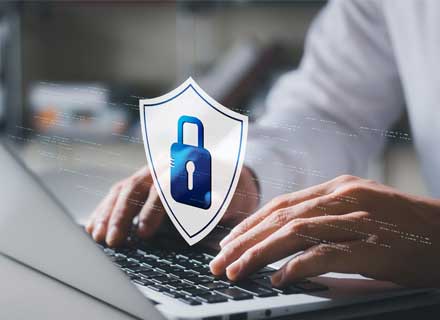Have you ever questioned why Halloween and cybersecurity awareness month come in the same timeframe, October, by coincidence? If Halloween’s ghosts aren’t frightful enough, statistics showing the rise in sophisticated and deadly cyber threats will do the trick.
Data has evolved into the essential resource of an intelligent organisation, used for everything from daily operations to developing long-term plans. However, the difficulties in securing data get more severe as its value and business importance rise.
The following list of seven crucial new technology developments and trends that businesses must watch out for will help them stay ahead of the curve.
Machine intelligence (AI)
Artificial intelligence is enhancing cybersecurity solutions by making faster responses to possible data breach scenarios. A more proactive approach has been made possible by Artificial intelligence.
Artificial intelligence has proven highly effective at protecting on-premises equipment and cloud services, apart from spotting unusual user behaviour. Enterprises must prioritise studying how Artificial intelligence can help their security objectives and fuel their continuous growth.
Distributed Ledger Technology
Blockchain and distributed ledger technologies provide a tamper-proof record of all transactions, enabling efficiency and transparency and significantly improving operations over the present environment of centralised database administration and paper-based bills.
It also simplifies adopting robust technological security features like encryption, automation, access control, orchestration, and endpoint security to efficiently manage risk by allowing organisations to pick the required data protection levels.
No Faith
Zero trust has swiftly evolved from an intriguing concept to a crucial business requirement.
According to it, every device, person, and network segment must be regarded as a possible security threat. Thus, steps must be taken to enable ongoing verification so that assurances of proper system and component operation may be provided frequently.
Internet of Things (IoT)
IoT devices are the increasing number of electronics that interface with the outside world to send and receive data, instructions, and other commands. They may offer advice on managing IT infrastructure more effectively and advising ways to make the best use of available resources. They can also assess the needs of businesses to develop new and better operating methods.
However, making these devices secure using conventional security mechanisms is challenging since they are mass-produced and lack inherent protection.
Industrial Control Systems (ICS)
Industrial domains include energy and utilities, oil and gas, pharmaceutical and chemical production, food and beverage production, and manufacturing. These sectors utilise industrial control systems to operate and support vital infrastructure.
The threat landscape expands as linked devices become more widely distributed. Even though such systems are vulnerable to assaults because of their external interface with IoT platforms and the cloud, attackers continue to target them efficiently.
High-Performance Computing (HPC)
The complex compute-intensive technology progressively entering public and commercial use needs to be better suited to the cloud environment.
In addition, security will become a significant worry at an increasing rate with the rapid adoption of High-Performance Computing across cloud and on-premise deployments in almost every industry, including space exploration, drug development, financial modelling, automobile design, and systems engineering.
Quantum Computing
Because quantum computing processes information fundamentally differently from classical computing, it can solve various challenging issues that classical computers will never be able to. Several of these issues relate to the most urgent demands of society, such as how to live sustainably on the planet, treat illnesses, and move people and products effectively.
In addition, asymmetric encryption techniques, created to counteract the threat posed by quantum computing, are distinct from contemporary public key encryption. Thus, the following step would incorporate quantum-safe solutions into cybersecurity planning and lifecycle management.

